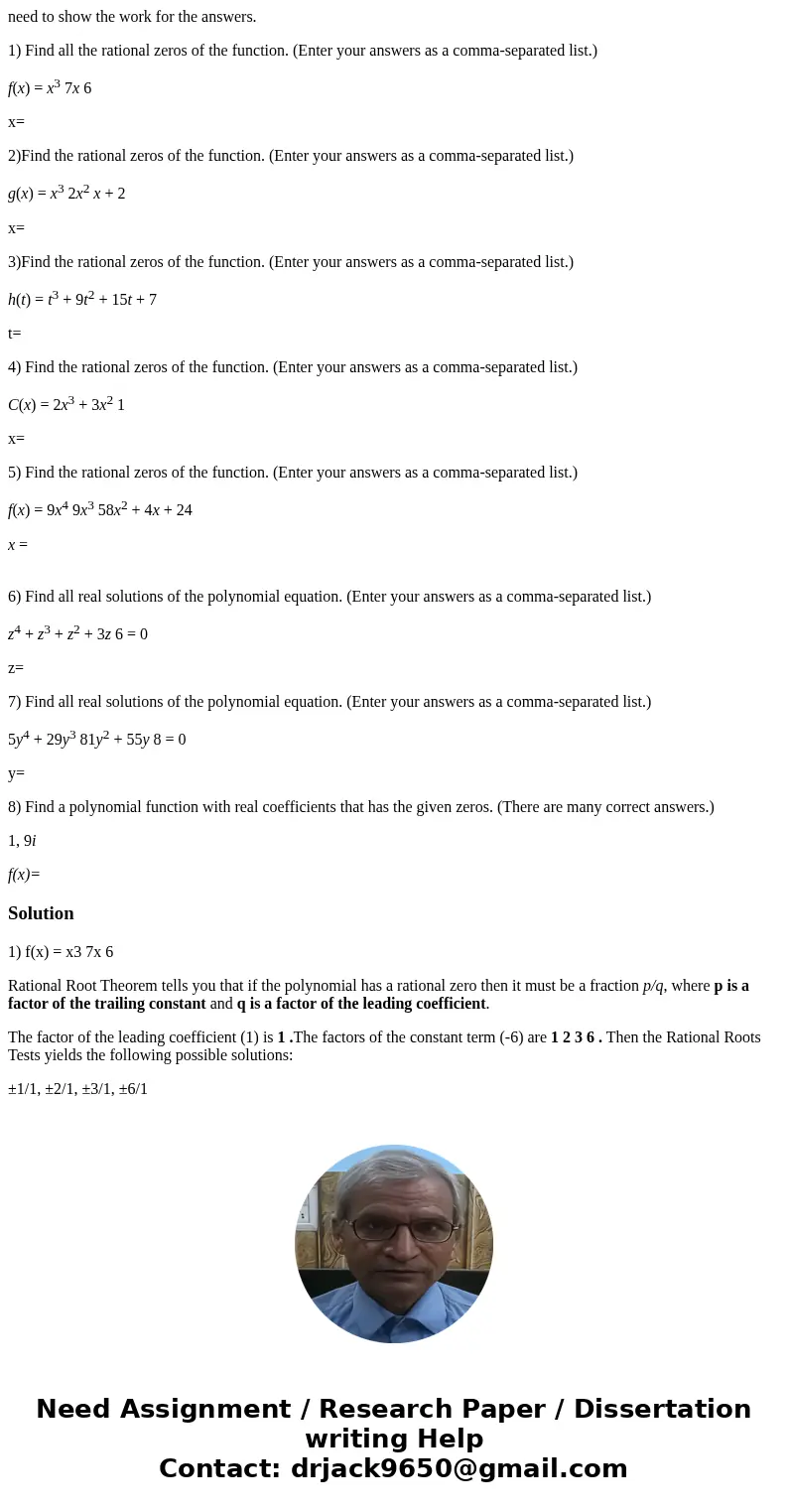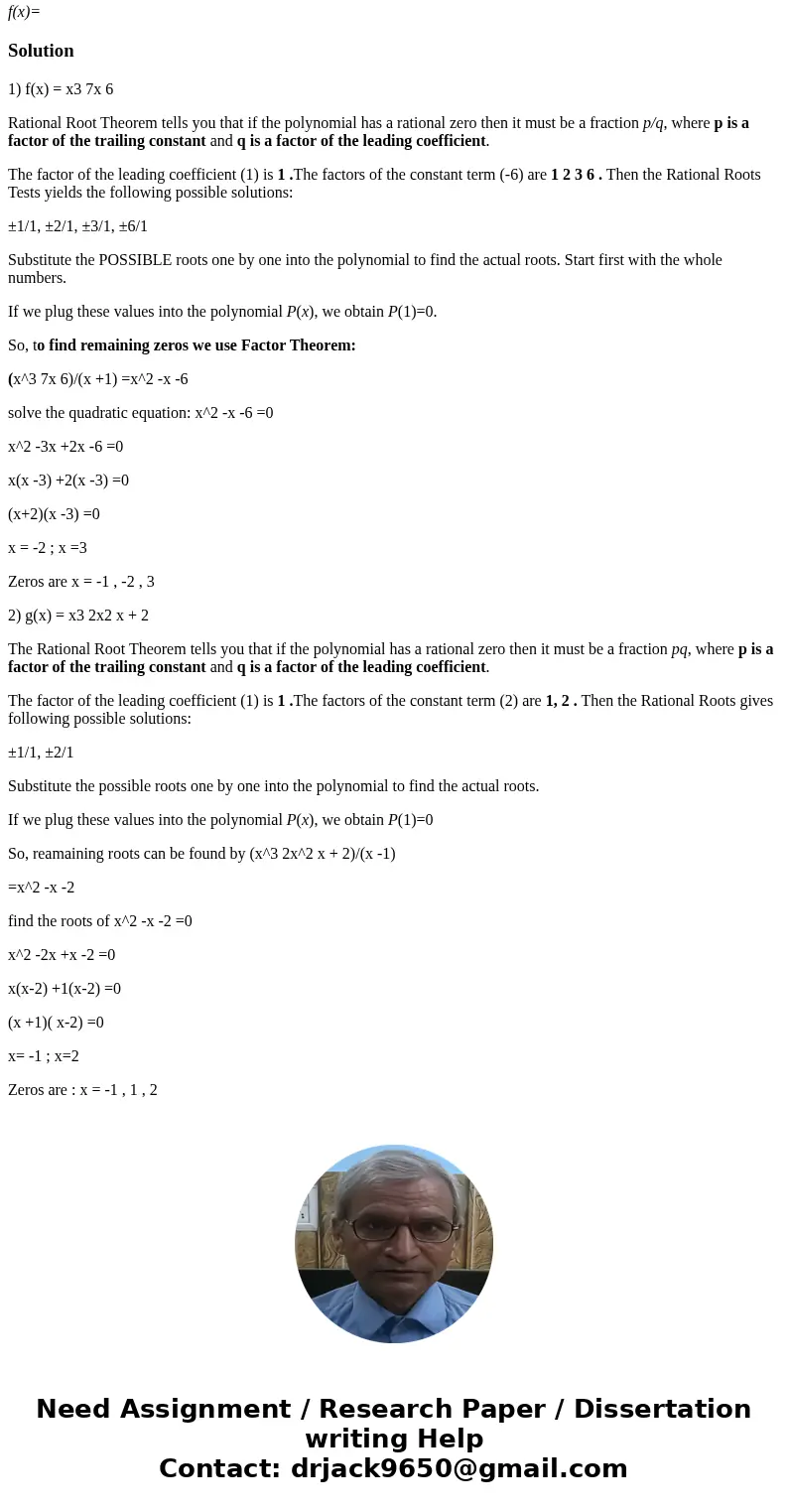need to show the work for the answers 1 Find all the rationa
need to show the work for the answers.
1) Find all the rational zeros of the function. (Enter your answers as a comma-separated list.)
f(x) = x3 7x 6
x=
2)Find the rational zeros of the function. (Enter your answers as a comma-separated list.)
g(x) = x3 2x2 x + 2
x=
3)Find the rational zeros of the function. (Enter your answers as a comma-separated list.)
h(t) = t3 + 9t2 + 15t + 7
t=
4) Find the rational zeros of the function. (Enter your answers as a comma-separated list.)
C(x) = 2x3 + 3x2 1
x=
5) Find the rational zeros of the function. (Enter your answers as a comma-separated list.)
f(x) = 9x4 9x3 58x2 + 4x + 24
x =
6) Find all real solutions of the polynomial equation. (Enter your answers as a comma-separated list.)
z4 + z3 + z2 + 3z 6 = 0
z=
7) Find all real solutions of the polynomial equation. (Enter your answers as a comma-separated list.)
5y4 + 29y3 81y2 + 55y 8 = 0
y=
8) Find a polynomial function with real coefficients that has the given zeros. (There are many correct answers.)
1, 9i
f(x)=
Solution
1) f(x) = x3 7x 6
Rational Root Theorem tells you that if the polynomial has a rational zero then it must be a fraction p/q, where p is a factor of the trailing constant and q is a factor of the leading coefficient.
The factor of the leading coefficient (1) is 1 .The factors of the constant term (-6) are 1 2 3 6 . Then the Rational Roots Tests yields the following possible solutions:
±1/1, ±2/1, ±3/1, ±6/1
Substitute the POSSIBLE roots one by one into the polynomial to find the actual roots. Start first with the whole numbers.
If we plug these values into the polynomial P(x), we obtain P(1)=0.
So, to find remaining zeros we use Factor Theorem:
(x^3 7x 6)/(x +1) =x^2 -x -6
solve the quadratic equation: x^2 -x -6 =0
x^2 -3x +2x -6 =0
x(x -3) +2(x -3) =0
(x+2)(x -3) =0
x = -2 ; x =3
Zeros are x = -1 , -2 , 3
2) g(x) = x3 2x2 x + 2
The Rational Root Theorem tells you that if the polynomial has a rational zero then it must be a fraction pq, where p is a factor of the trailing constant and q is a factor of the leading coefficient.
The factor of the leading coefficient (1) is 1 .The factors of the constant term (2) are 1, 2 . Then the Rational Roots gives following possible solutions:
±1/1, ±2/1
Substitute the possible roots one by one into the polynomial to find the actual roots.
If we plug these values into the polynomial P(x), we obtain P(1)=0
So, reamaining roots can be found by (x^3 2x^2 x + 2)/(x -1)
=x^2 -x -2
find the roots of x^2 -x -2 =0
x^2 -2x +x -2 =0
x(x-2) +1(x-2) =0
(x +1)( x-2) =0
x= -1 ; x=2
Zeros are : x = -1 , 1 , 2


 Homework Sourse
Homework Sourse